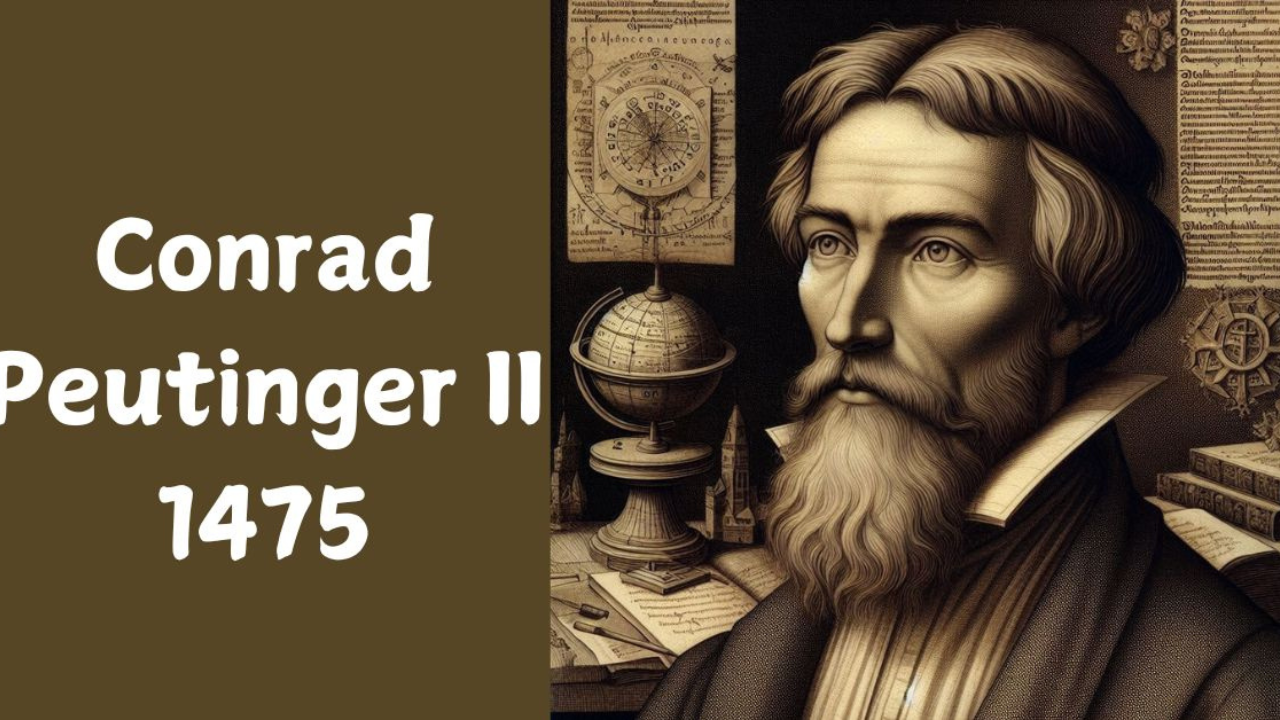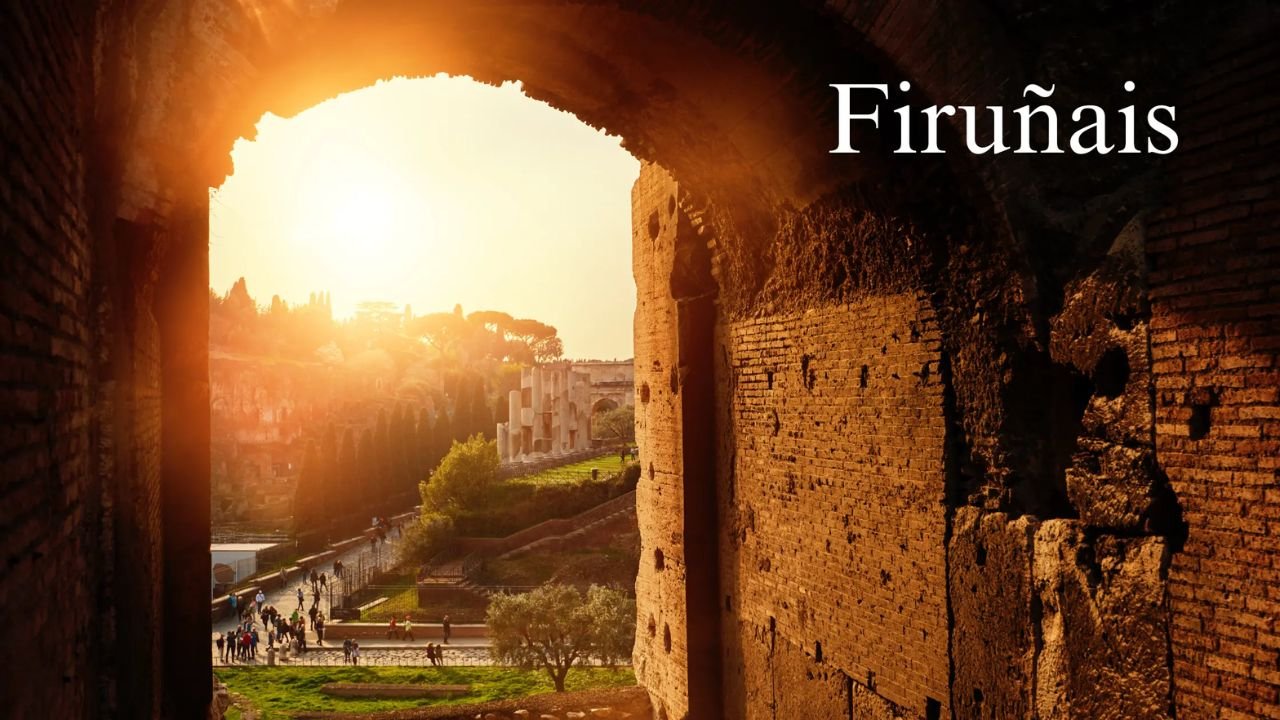Blog
Conrad Peutinger in 1475: The Visionary Scholar Reshaping Cartography

In the bustling world of 15th-century Europe, a singular figure emerged who would forever change the landscape of cartography: Conrad Peutinger in 1475: Born in a time when maps were often crude and lacking detail, he possessed an insatiable curiosity and passion for geography that set him apart from his contemporaries. In 1475, his groundbreaking work began to reshape how we understand space and history through maps. From ancient Roman routes to vibrant cityscapes, Peutinger’s contributions laid the foundation for modern cartography as we know it today. Join us on this journey into the life and legacy of a visionary scholar whose influence still resonates in our understanding of geography!
Early life and education of Conrad Peutinger
Conrad Peutinger was born in 1465 in Augsburg, Germany. His early life was marked by a profound curiosity about the world around him. This inquisitiveness laid the groundwork for his future endeavors.
Peutinger’s education began at home, where he absorbed knowledge from his family’s extensive library. He later enrolled at the University of Ingolstadt, immersing himself in classical studies and humanism.
His academic journey didn’t stop there; he traveled to Italy to deepen his understanding of ancient texts and cartography. The influence of renowned scholars during this period shaped his intellectual pursuits.
Such experiences not only honed his skills but also ignited a passion for maps that would define much of his career. It was clear from an early age that Conrad Peutinger possessed a unique vision for geography that would resonate throughout history.
Peutinger’s passion for collecting and preserving ancient maps
Conrad Peutinger’s fascination with ancient maps was not just a hobby; it was a lifelong mission. He believed that these historical artifacts held the keys to understanding past civilizations. His collection became an intellectual pursuit, blending geography and history.
Peutinger traveled extensively across Europe, seeking out rare manuscripts and cartographic treasures. Each map he acquired told stories of trade routes, conquests, and cultural exchanges that shaped the Roman Empire.
His meticulous nature ensured that every piece in his collection received the utmost care. He didn’t merely store maps; he preserved them for future generations to explore and learn from their significance.
By assembling various geographical representations, Peutinger aimed to create a comprehensive view of the world as it once was. His efforts were instrumental in recognizing the value of cartography beyond mere navigation—transforming it into an art form worthy of study.
The famous Tabula Peutingeriana: A detailed map of the Roman Empire
The Tabula Peutingeriana is a remarkable artifact that showcases the vastness of the Roman Empire. This ancient map, believed to date back to the 4th century, represents more than just geographical data; it embodies cultural and historical narratives.
Unlike modern maps, its format is elongated and scroll-like. It captures not only cities but also roads, rivers, and mountains in an imaginative way. The intricate details reveal how interconnected regions were during Roman times.
Peutinger’s passion for this map highlighted his dedication to preserving knowledge from antiquity. His enhancements allowed future generations to explore routes once traversed by merchants and soldiers alike.
Many historians regard this work as vital for understanding Rome’s infrastructure and expansion strategies. The Tabula continues to inspire geographers even today due to its unique representation of space and place within a grand empire.
Influence of Peutinger’s work on modern cartography
Conrad Peutinger’s work significantly shaped the world of modern cartography. His meticulous approach to map-making set a new standard for accuracy and detail. The Tabula Peutingeriana, in particular, showcased an innovative way of representing geographical information.
This ancient map served not only as a navigational tool but also as a historical document. Its influence can be seen in how contemporary maps integrate cultural and political elements alongside geographical data.
Peutinger’s methods encouraged future cartographers to explore beyond mere land representation. He emphasized the importance of incorporating routes, distances, and landmarks into maps.
His legacy is evident today where maps are more than just tools—they tell stories. Cartographers now strive for clarity while maintaining artistic flair, echoing Peutinger’s vision that geography should engage both the mind and imagination.
Legacy of Conrad Peutinger in the field of geography and map-making
Conrad Peutinger’s legacy in geography is profound and far-reaching. His meticulous approach to cartography laid the groundwork for future scholars and mapmakers.
The Tabula Peutingeriana stands as a testament to his innovative spirit. This ancient Roman road map not only showcased extensive travel routes but also sparked interest in understanding geographical relationships.
Peutinger’s passion for collecting ancient manuscripts inspired others to preserve historical knowledge, creating a ripple effect that influenced generations of geographers.
His work bridged the classical past with Renaissance thought, merging science, art, and exploration into one cohesive vision.
Today’s cartographers owe much to his pioneering methods and dedication to accuracy. The principles he established continue to resonate within modern mapping techniques, emphasizing precision over mere aesthetics.
In education, his contributions helped shape curricula focused on geography and history interlinked through maps—a practice still relevant today.
Conclusion:
Conrad Peutinger’s influence extends far beyond the maps he created. His determination to document and preserve ancient cartographic knowledge has paved the way for future generations of scholars and mapmakers.
His work serves as a bridge, connecting the past with our present understanding of geography. The meticulous detail in his mapping highlighted the significance of ancient routes, cities, and cultures.
Peutinger’s legacy continues to resonate today. Modern cartography owes much to his passion for exploration and documentation. As technology advances, we still find value in his methods and insights.
The spirit of inquiry that drove Peutinger is alive in contemporary geographic studies. Each new discovery builds upon what he laid down centuries ago, reminding us that history is not merely a record but an ongoing journey into understanding our world better.
FAQ’s
Who was Conrad Peutinger?
Conrad Peutinger was a German humanist and scholar born in 1465. He is best known for his contributions to cartography, particularly through the creation of the Tabula Peutingeriana, an ancient map of the Roman Empire that has had lasting significance.
What did Conrad Peutinger do in 1475?
In 1475, Conrad Peutinger began to focus on collecting and preserving maps and geographical knowledge from antiquity. His passion for cartography during this time laid the groundwork for his future achievements in mapping.
What is the Tabula Peutingeriana?
The Tabula Peutingeriana is a medieval copy of a Roman road map that illustrates various locations within the Roman Empire. It serves as an important historical document due to its intricate details about roads, cities, and distances across regions.
How did Conrad Peutinger influence modern cartography?
Peutinger’s work contributed significantly to our understanding of ancient geography. His meticulous attention to detail inspired later generations of mapmakers who sought to accurately depict geographical spaces.
What is Conrad Peutinger’s legacy today?
Conrad Peutinger’s legacy endures through his advancements in geographic scholarship and map-making techniques. Today, he remains a key figure celebrated by historians and geographers alike for reshaping how we understand maps from both ancient times and their evolution into modern day practices.
Blog
Wepbound: A Complete Guide to its Features and Benefits

In the evolving landscape of digital tools and platforms, Wepbound has emerged as a reliable solution for many online needs. From enhanced accessibility to versatile functionality, Wepbound offers tools that empower both businesses and individual users. In this guide, we’ll dive into what Wepbound is, its notable features, benefits, and how it stands out in today’s competitive market.
What is Wepbound?
Wepbound is a modern platform designed to simplify online processes for users, providing tools and features that cater to both professionals and beginners. Whether you’re seeking to manage online content, improve accessibility, or enhance online operations, Wepbound offers a versatile set of resources to meet these demands effectively.
As digital transformation accelerates, tools like Wepbound play a vital role in supporting seamless online experiences. This user-friendly platform helps streamline operations, offering robust features without overwhelming users with unnecessary complexities.
Key Features of Wepbound
User-Friendly Interface
Wepbound stands out for its simple and intuitive interface, making it accessible for users of all experience levels. Whether you’re tech-savvy or a beginner, navigating Wepbound is smooth and efficient.
High-Speed Performance
One of Wepbound’s core strengths is its superior performance. Its optimized features ensure that operations run swiftly, reducing delays and enhancing user productivity.
Comprehensive Integration
Wepbound integrates with multiple platforms, providing seamless connectivity across tools and systems. This allows businesses and individuals to maintain their workflows without any disruptions.
Customization Options
Users can tailor Wepbound to meet specific needs. The platform offers a variety of customization tools, allowing users to optimize their experience based on personal preferences or business goals.
Secure and Reliable
With built-in security features, Wepbound ensures user data remains protected. It utilizes encryption and other safeguards to provide a secure online environment.
Why Choose Wepbound?
Enhances Online Efficiency
Wepbound simplifies complex tasks, helping users save time and effort. It automates many processes, improving efficiency and productivity.
Adaptable for All Users
Whether you are a business owner, student, or creative professional, Wepbound adapts to various needs. Its versatility makes it a go-to solution for a broad audience.
Cost-Effective Solution
Wepbound delivers value for money. It offers a wide array of features at a reasonable price, making it accessible to individuals and businesses alike.
Reliable Customer Support
Wepbound prioritizes customer satisfaction with responsive and knowledgeable support teams ready to assist users at any time.
Benefits of Using Wepbound
Increased Productivity
Wepbound eliminates manual tasks, enabling users to focus on what matters most. This leads to a significant boost in overall productivity.
Improved Accessibility
The platform ensures that all users, regardless of their technical skills, can use its tools without difficulty.
Scalability
Wepbound is built to grow with you. Whether you’re a small business or a large enterprise, the platform scales effortlessly to meet evolving needs.
Data Protection
Security is a top priority for Wepbound. Its advanced encryption and security protocols ensure all user data remains private and secure.
Seamless Collaboration
Teams can collaborate efficiently on Wepbound, thanks to its real-time features and integrated tools. This allows projects to move faster with fewer delays.
How Wepbound Enhances Online Processes
Wepbound acts as a bridge between complex tools and seamless user experience. By offering centralized resources, it eliminates the need for multiple tools, allowing users to perform tasks in one place.
For businesses, Wepbound simplifies workflow management, improves team collaboration, and increases customer engagement. For individuals, it provides a streamlined solution for managing online activities and projects without complications.
Wepbound for Businesses
Businesses today require tools that adapt to their changing needs. Wepbound is a valuable resource for companies looking to improve efficiency and communication. With its scalability and advanced integrations, businesses can utilize Wepbound to enhance operations and achieve better outcomes.
Streamlined Workflow Management
Managing daily tasks becomes effortless with Wepbound’s tools for scheduling, communication, and monitoring.
Improved Collaboration
Teams can work on projects seamlessly with real-time updates and collaboration features.
Cost Savings
By centralizing tools into a single platform, Wepbound helps businesses save costs on purchasing multiple subscriptions.
Wepbound for Individuals
Individuals, freelancers, and creative professionals can also leverage Wepbound to improve their personal or professional workflows.
Easy-to-Use Tools
The platform’s simple design makes it perfect for individuals who don’t want to spend time learning complicated software.
Enhanced Productivity
By automating repetitive tasks, Wepbound allows individuals to focus on critical goals.
Affordable and Accessible
Wepbound’s affordability ensures it is accessible to individuals, regardless of their budget or resources.
Wepbound vs. Other Platforms
Simplicity
Unlike other platforms that may overwhelm users, Wepbound’s design ensures simplicity without sacrificing functionality.
Flexibility
Wepbound adapts to various user needs, whether for businesses or individuals, offering tools that work across multiple scenarios.
Performance
The platform’s superior speed and efficiency give it a competitive edge over many other alternatives.
Security
Wepbound prioritizes user safety, ensuring data remains secure and private through robust encryption systems.
How to Get Started with Wepbound
- Sign Up for an Account
Begin by creating an account on the Wepbound platform. The registration process is quick and easy. - Explore Features
Once registered, explore the wide range of tools and resources offered by Wepbound. - Customize Your Settings
Personalize the platform based on your specific needs and preferences. - Start Using Wepbound
Begin using Wepbound to manage tasks, collaborate, and improve productivity. - Seek Support
Wepbound offers responsive customer support if you encounter any challenges along the way.
Conclusion
In today’s fast-paced digital world, Wepbound stands out as an efficient, reliable, and versatile platform for both businesses and individuals. From boosting productivity to enhancing collaboration and streamlining workflows, Wepbound is a game-changer for anyone seeking to simplify online processes.
With its user-friendly interface, scalability, and powerful features, Wepbound is poised to become a trusted solution for managing tasks effectively. Whether you’re just starting or looking to optimize your operations, Wepbound offers tools that cater to diverse needs while maintaining affordability and security.
Common FAQs About Wepbound
What is Wepbound used for?
Wepbound is a platform designed to simplify online workflows, improve productivity, and offer solutions for both businesses and individuals.
Is Wepbound suitable for beginners?
Yes, Wepbound’s user-friendly interface ensures that beginners can navigate and utilize the platform effortlessly.
How secure is Wepbound?
Wepbound prioritizes user data security through encryption and other advanced safety protocols.
Can Wepbound integrate with other tools?
Absolutely! Wepbound offers seamless integrations with various platforms to enhance user experiences.
Is Wepbound cost-effective?
Yes, Wepbound delivers high-quality features at an affordable price, ensuring it provides excellent value for money.
How do I get started with Wepbound?
You can sign up for an account, customize your settings, and start using Wepbound’s tools immediately.
Blog
The Fascinating World of Firuñais: Language, Culture, and History

Firuñais, a dialect rooted in the Galician region of Spain, is more than just a way of speaking; it’s a symbol of the area’s rich history, distinct culture, and local pride. For centuries, this dialect has been passed down through generations, acting as a bond that ties communities together and reflects the unique character of Galicia. Spoken by locals in certain parts of the region, Firuñais is not widely known outside its native setting, making it both a rare and cherished part of Galicia’s heritage.
This article delves deep into the origins, linguistic features, cultural significance, and current status of Firuñais, exploring how it reflects the spirit of Galicia.
The Origins of Firuñais
Firuñais traces its linguistic heritage back to the early forms of Galician-Portuguese, the common ancestor of the Galician and Portuguese languages. Emerging in the medieval period, Galician-Portuguese was a Romance language that evolved from Latin, brought by the Romans to the Iberian Peninsula. Firuñais developed as a local variant of Galician-Portuguese, retaining many of the features of this language while adopting unique sounds, expressions, and grammatical structures that set it apart.
This dialect likely evolved due to the geographical isolation of Galician communities, particularly in mountainous or rural areas, which led to the development of distinct linguistic characteristics. Over time, as the official Galician language evolved, Firuñais preserved older forms, lending it an almost “time-capsule” quality that reflects historical Galician speech.
Linguistic Characteristics of Firuñais
Firuñais boasts several linguistic features that make it distinct from standard Galician and even other Galician dialects. Some of its unique elements include:
- Pronunciation: often features softer consonant sounds and a slight melodic intonation, giving it a musical quality.
- Vocabulary: Many words in reflect old Galician terms that are no longer in common use. It also includes specific words tied to rural life, agriculture, and local flora and fauna, reflecting the lifestyle of the region’s communities.
- Grammar and Syntax: Firuñais uses structures that have fallen out of mainstream Galician usage, with some unique verb forms and noun cases that harken back to older forms of Romance languages.
Because of these characteristics, Firuñais can sound both familiar and foreign to speakers of standard Galician, making it a truly unique dialect.
Cultural Significance of the Firuñais Dialect
In Galicia, dialects like Firuñais are more than linguistic variations; they represent a deep sense of identity, community, and continuity with the past. For locals, speaking Firuñais is often a source of pride, a way of expressing their distinct identity within Galicia and preserving a language that links them to their ancestors.
Firuñais also serves as a living record of Galician cultural history, encapsulating old ways of thinking and living that are woven into its words and expressions. For example, many phrases in reflect agricultural practices, local customs, and familial structures that are integral to rural life in Galicia.
Current Status of the Firuñais Dialect
Today, faces several challenges, mainly due to urbanization, the dominance of standard Galician and Spanish, and the migration of younger generations to cities. In many cases, younger people in Galicia may not learn Firuñais, leading to a decline in native speakers and knowledge of the dialect.
However, there are also local initiatives focused on preserving as part of Galicia’s intangible cultural heritage. Efforts include community-led language courses, documentation projects, and the inclusion of Firuñais in local cultural festivals. Through these initiatives, locals hope to keep Firuñais alive for future generations, celebrating it as an essential part of Galician identity.
The Role of Firuñais in Modern Galician Identity
Firuñais has a special place in Galician identity, offering a counterpoint to the more urbanized and standardized forms of Galician spoken in major cities. For many, the dialect represents a return to roots, a link to rural landscapes, and a quieter, more traditional way of life. In a world where modernization and global influences are transforming even the most isolated regions, Firuñais stands as a resilient reminder of Galicia’s unique cultural heritage.
Preserving Firuñais for Future Generations
The preservation is a challenge, but it is also a cause that many local cultural organizations, historians, and linguists are passionate about. Efforts to preserve Firuñais often involve documentation, educational programs, and encouraging intergenerational language transmission. By recording Firuñais and promoting its usage among younger people, these initiatives aim to safeguard the dialect as a treasured part of Galician heritage.
Also Read: Sophie Rain Spiderman Video Oficial: A Viral Marvel Experience
Firuñais and the Broader Galician Linguistic Landscape
Galicia is home to a rich tapestry of dialects and linguistic variations, each adding to the complexity of the region’s cultural identity. It is just one part of this landscape, yet it represents a particularly valuable piece due to its uniqueness and rarity. By understanding and preserving, Galicia can ensure that its linguistic diversity remains intact, offering future generations a fuller picture of the region’s cultural and historical richness.
Conclusion
It may be a lesser-known dialect, but it is a vital part of Galicia’s cultural and linguistic heritage. Its preservation is essential not only for linguistic diversity but also for maintaining a living link to the region’s past. As Galicia moves forward, balancing modernity with tradition, It will continue to serve as a reminder of the strength and beauty of local identities. Embracing and preserving It is more than protecting a dialect; it’s about celebrating the heart and soul of Galicia.
Blog
Craigslist Cincinnati: A Comprehensive Guide to Navigating Local Listings

Why Craigslist Cincinnati is So Popular
Craigslist Cincinnati thrives because it taps into the local community’s needs. Unlike national e-commerce sites or job boards, it offers hyper-local listings, allowing users to interact with people in their city or nearby areas. This aspect makes Craigslist the go-to platform for anyone in Cincinnati who prefers quick, local transactions.
From inexpensive second-hand goods to hard-to-find collectibles, Craigslist Cincinnati provides a wide range of categories that cater to the varied interests of its users. Job seekers and employers also find value here as it offers one of the simplest and most cost-effective ways to post job listings without the high fees associated with other recruitment platforms.
How to Buy Safely on Craigslist Cincinnati
When it comes to buying on Craigslist Cincinnati, safety and smart practices are key. Craigslist doesn’t have buyer protection like large e-commerce platforms, so taking the right precautions is important. First, always meet in public places. Many people choose locations like coffee shops or police stations for their transactions. Never agree to meet in secluded places or at night.
Inspect the item you are purchasing thoroughly before handing over any cash. If you’re buying electronics or a car, consider bringing someone knowledgeable along or request a test drive in the case of vehicles. Avoid shipping arrangements; Craigslist is designed for face-to-face, local transactions. Always deal in cash or through reputable payment methods, but avoid giving out too much personal information.
Selling on Craigslist Cincinnati: Tips for Success
Selling on Craigslist Cincinnati can be a quick way to offload unwanted items and make some extra money. To make your listing stand out, follow these simple tips. First, take clear, high-quality photos of the items you’re selling. Listings with photos tend to attract more attention than those without.
Your title should be concise but descriptive. For example, instead of “Sofa for sale,” try “Lightly Used Leather Sofa – Brown – $300 OBO.” This gives potential buyers more context and a price range upfront. Also, be detailed in the description, including any flaws or conditions of the item. Honesty helps prevent misunderstandings and builds trust with buyers.
Lastly, be responsive to inquiries and keep communication professional. Prompt replies to messages will improve your chances of securing a sale. And, just like with buying, prioritize safety—meet in public places and deal in cash.
Craigslist Cincinnati Jobs: Finding Your Next Opportunity
Craigslist Cincinnati is an excellent resource for job seekers across various fields. Unlike specialized job platforms that often require fees for employers to post, Craigslist is a low-cost alternative, meaning small businesses and local employers frequently use it to find talent. Whether you’re looking for a full-time position, a part-time gig, or even freelance work, Craigslist’s job section offers plenty of opportunities.
When searching for jobs, it’s vital to vet the listings carefully. Unfortunately, like many job platforms, Craigslist can have fraudulent listings. Always research the company before applying, and be wary of offers that seem too good to be true, such as high pay for little work.
Another tip is to refresh your searches frequently. New jobs can pop up at any time, and being one of the first to apply may increase your chances of landing an interview. Tailor your resume to the specific roles you’re applying for, and send it directly through Craigslist’s messaging system.
Housing and Real Estate on Craigslist Cincinnati
If you’re new to the city or just looking for a change, Craigslist Cincinnati’s housing section is a valuable tool. You can find everything from apartments to rent, houses for sale, or even roommates looking to share space. Craigslist’s real estate section allows users to filter by rent, location, size, and amenities, making it easier to narrow down your options.
Be cautious of housing scams, which unfortunately can be prevalent on Craigslist. Never send money before seeing the property, and ensure that you meet landlords or real estate agents in person to verify listings. Be particularly cautious of listings with extremely low rent, as they may be too good to be true.
Craigslist Cincinnati Free Section: Hidden Gems
One of the most popular and intriguing sections of Craigslist Cincinnati is the “Free” section. Here, you’ll find a variety of items being given away by users for free. This could include furniture, appliances, or even leftover construction materials. Many people post here when they are moving or downsizing and need to get rid of items quickly. While you may have to sift through some less-than-ideal offerings, there are often hidden gems that you can pick up at no cost.
Just as with buying and selling, it’s essential to be cautious when arranging to pick up free items. Always prioritize safety and avoid meeting at someone’s private residence if possible.
Craigslist Cincinnati Services: Find Local Professionals
Craigslist Cincinnati also features a robust services section, allowing users to find local professionals for everything from plumbing to tutoring. Whether you need a handyman, a photographer, or a web designer, Craigslist offers a simple way to connect with freelancers and small businesses in the area.
For those offering services, Craigslist can be an invaluable platform to advertise your skills. The key to success is crafting a compelling listing that clearly outlines your expertise, rates, and what sets you apart from the competition. Positive reviews and recommendations from previous clients can also help you stand out.
Community Events and Local Discussions
Craigslist Cincinnati isn’t just for commerce and jobs; it also serves as a community hub where locals can find out about events, activities, and discussions happening in the area. From garage sales to neighborhood block parties, this section is great for those looking to engage with the Cincinnati community on a deeper level.
Local forums allow users to start conversations about various topics, from finding advice to sharing recommendations. It’s a way to connect with people in your area beyond just buying or selling, creating a more community-focused experience.
Craigslist Cincinnati: Personal Safety and Scam Prevention
While Craigslist Cincinnati offers many advantages, it’s important to be aware of potential scams. Craigslist has a guide for avoiding common scams, and it’s worth reviewing before making any transactions. Some red flags to watch for include requests for wire transfers, overly complicated payment methods, or sellers who refuse to meet in person.
Always trust your instincts. If something feels off, walk away. Craigslist’s focus on local transactions means there’s no need to deal with anyone outside of your immediate area. Use its built-in resources like anonymous email forwarding to protect your identity, and never give out personal financial information.
How Craigslist Cincinnati Stands Out from Other Platforms
Craigslist Cincinnati offers simplicity in a world that often overcomplicates online transactions. Unlike newer platforms, which often involve lengthy sign-up processes, fees, or excessive personal information, Craigslist remains minimalist and straightforward. This no-frills approach is why it continues to be a favorite among Cincinnati locals.
Compared to other platforms like Facebook Marketplace or eBay, Craigslist doesn’t charge listing fees for most categories. This free access makes it highly attractive to people looking to buy, sell, or find work without additional costs. The hyper-local focus also gives users confidence that they’re interacting with people from their own community, which is a huge advantage when arranging face-to-face meetings or local pickups.
Conclusion
Also Read: Tamilyogi: Exploring the Popular Tamil Movie Streaming Platform
FAQs
How can I stay safe when meeting a buyer or seller on Craigslist Cincinnati?
Always meet in a public, well-lit area during the day. Many local police stations offer their parking lots as safe transaction zones. Avoid isolated areas, and consider bringing a friend along for extra security.
Is it safe to apply for jobs on Craigslist Cincinnati?
Yes, but always exercise caution. Research the company before applying, and avoid listings that ask for sensitive information upfront or sound too good to be true. If possible, contact the company directly to verify the legitimacy of the job posting.
What are the best times to post listings on Craigslist Cincinnati?
The best times to post are usually early in the morning or late at night when competition is lower. Refresh your listing every couple of days to keep it near the top of search results.
Can I post multiple listings for the same item on Craigslist Cincinnati?
No, Craigslist’s terms of use prohibit users from posting duplicate listings. Instead, try refreshing your original listing to keep it active.
How do I avoid scams when using Craigslist Cincinnati?
Avoid wire transfers, never provide personal financial details, and insist on meeting in person. Also, beware of listings offering significantly underpriced goods or overly complex payment arrangements.
What’s the best way to find housing on Craigslist Cincinnati?
Use the filters to narrow down your search based on your budget and location preferences. Always view properties in person and verify the landlord or property manager’s credentials before signing anything or handing over money.
-

 Blog4 months ago
Blog4 months agoMega Personal: The Future of Online Personal Ads
-

 Technology4 months ago
Technology4 months agoHow to Use SSIS 950 for Seamless ETL Workflows in SQL Server
-

 Health4 months ago
Health4 months agoExploring the Concept of Çeciir: Meaning, Significance, and Benefits
-

 Home Improvement4 months ago
Home Improvement4 months agoHow to Crochet a Rug: 105 Best Patterns for Your Floor
-

 Blog4 months ago
Blog4 months agoA Life Remembered The Obituary of Brennan Mosley
-

 Technology4 months ago
Technology4 months agoEditor Benjamin Tech Guru Keezy.co: The Visionary Behind a Digital Revolution
-

 Health4 months ago
Health4 months agoTwave of happy_: Riding the Tide of Emotional Well-being
-

 Technology4 months ago
Technology4 months ago70537865 Allis: The Engine that Transforms Agricultural Efficiency

